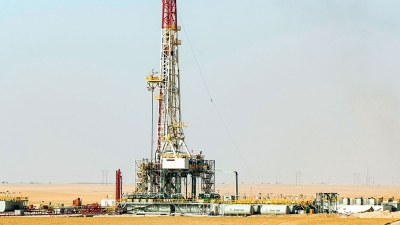


Phosphate in the Kingdom of Saudi Arabia is a natural resource and one of the mining industries and elements of economic diversification in the Kingdom. Most phosphate quantities are concentrated north of the Kingdom in the Northern Borders Province. The Kingdom produces annually about three million t of phosphate ore and its products, and the Kingdom's phosphate ore reserve is estimated at around 2.7 billion t. Moreover, the Northern Border Province holds about 7 percent of the world's phosphate reserve in Turayf Governorate, particularly in Wa'ad al-Shamal City.
Phosphate exploitation in Saudi Arabia
Initially, phosphate exploitation in the Kingdom focused on meeting the domestic demand for phosphate in agricultural fertilizer production. However, developing industrial cities such as Wa'ad al-Shamal and Ras al-Khair have boosted the Kingdom's phosphate production. According to the General Authority for Statistics, the exploitation of phosphate ore increased by 199.11 percent, surging from no more than 1,911,000 t in 2014 to 5,716,000 t in 2019.
The discovery of phosphate deposits in Saudi Arabia
Phosphate ore was discovered in the Kingdom in 1983 at the Hazm al-Jalamid site, located approximately 148 km from Turayf Governorate, along with the Umm Wu'al and al-Khabra sites. The first shipment of phosphate was exported in 2017. About sixteen countries are benefiting from Saudi phosphate exports, some of which are in East Africa, in addition to India, Bangladesh, Brazil, and Australia.
The Saudi Arabian Mining Company 'Ma'aden' has been entrusted with overseeing the phosphate sector in the Kingdom. Ma'aden is the second-largest exporter of phosphate fertilizers globally (according to the 2020 annual report). Its primary phosphate products include: diammonium phosphate, monoammonium phosphate, ammonia, sulfuric and phosphoric acids, and composite phosphate fertilizers.
Phosphate sites in Saudi Arabia
According to data from the General Authority of Statistics, the number of phosphate ore sites discovered in the Kingdom reached fifty sites as of 2019. These sites are managed by Ma'aden Phosphate Company (MPC), a joint venture between Ma'aden and the Saudi Basic Industries Corporation 'SABIC,' and Ma'aden Wa'ad al-Shamal Phosphate Company (MWSPC), a joint venture between 'Ma'aden,' 'SABIC,' and the American company Mosaic.
In 2018, the Kingdom inaugurated its largest phosphate mining and production facilities, Wa'ad al-Shamal Industrial City, spanning 440 km, west of Turayf Governorate, near the phosphate mines of Hazm al-Jalamid and Umm Wu'al and al-Khabra.
Wa'ad al-Shamal Industrial City encompasses Ma'aden Wa'ad al-Shamal Phosphate Company, an ammonia plant with an annual ammonia production capacity reaching 1.1 million t, an ore concentration plant, a phosphoric acid plant, a sulfuric acid plant, a dedicated loading and unloading site for the mining train, a handling area, spare parts warehouses, and field maintenance workshops.
Ras al-Khair Port, located on the coast of the Arabian Gulf east of the Kingdom, is the primary phosphate loading and export hub among the Kingdom's ports. It is connected to the northern phosphate deposits in the Kingdom via the dual-mode mining train operated by the Saudi Arabia Railways 'SAR,' covering a distance of 1,500 km.
Phosphate is an essential production component in the National Industrial Development and Logistics Program (NIDLP), one of the programs under Saudi Vision 2030. The program aims to achieve economic diversification and reduce reliance on oil revenues by strengthening sectors such as mining and logistics services as it strives to increase the Kingdom's phosphate production and elevate its exports.
Related quizzes

